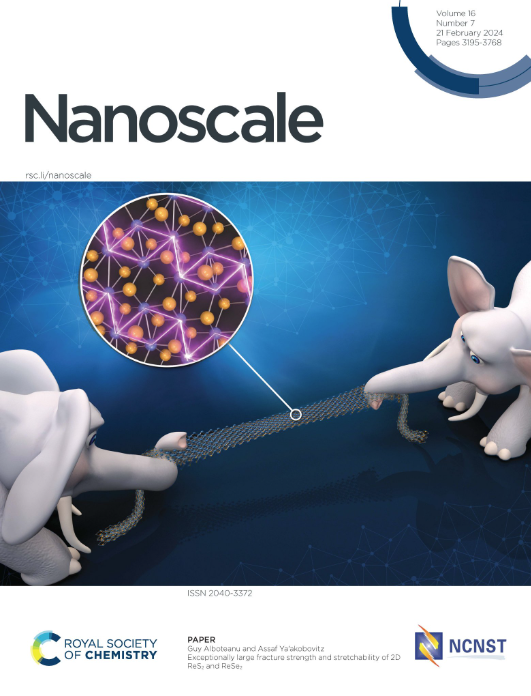Role of Polycrystalline F-SnO2 Substrate Topography on Formation Mechanism and Morphology of Pt Nanoparticles by Solid-State-Dewetting
IF 5.8
3区 材料科学
Q1 CHEMISTRY, MULTIDISCIPLINARY
引用次数: 0
Abstract
Solid-state-dewetting (SSD) of thin films is increasingly utilized to fabricate nanoparticles for catalysis. In-depth understanding of particle formation mechanism is crucial to control key properties of catalytic particles such as size, size distribution, and structure. In contrast to most studies on SSD of thin metal films on smooth substrates (e.g., SiO2/Si, …), here we investigate how the topography of practical substrates, such as electrically conductive F-SnO2 (FTO), affects the formation mechanism and size of Pt particles – with potential use as nanoparticle electrodes, e.g., in electrochemical conversion or sensing applications. For this, we combined in situ scanning transmission electron microscopy (STEM) with ex situ rapid thermal annealing (RTA) methodologies. Our results indicate that, by dewetting 5 nm of Pt films on FTO, the arrangement of Pt nanoparticles exhibits a bimodal particle distribution. This is driven by: i) a thinner initial Pt film thickness in the “depths” of the FTO substrate due to shadowing effects, and ii) the formation of varying surface curvatures in the Pt film, both caused the topography and grain structure of the FTO substrate. Particularly, the latter introduces an additional driving force for Pt diffusion from peaks and ridges (positive local curvature) to flat terraces (no curvature) and valleys (negative local curvature).多晶F-SnO2衬底形貌对固态脱湿法制备Pt纳米颗粒形成机理和形貌的影响
薄膜的固态脱湿(SSD)技术越来越多地用于制备纳米催化剂。深入了解颗粒的形成机理对于控制催化颗粒的粒径、粒径分布和结构等关键特性至关重要。与大多数在光滑衬底(如SiO2/Si,…)上的金属薄膜SSD的研究相反,这里我们研究了实际衬底(如导电的F-SnO2 (FTO))的形貌如何影响Pt颗粒的形成机制和尺寸-具有潜在用途的纳米颗粒电极,例如在电化学转换或传感应用中。为此,我们将原位扫描透射电子显微镜(STEM)与非原位快速热退火(RTA)方法相结合。结果表明,在FTO上脱湿5nm的Pt膜,Pt纳米粒子的排列呈现双峰型的粒子分布。这是由以下因素驱动的:i)由于阴影效应,FTO衬底“深处”的初始Pt膜厚度较薄;ii) Pt膜中不同表面曲率的形成,两者都导致了FTO衬底的形貌和晶粒结构。特别是,后者为铂从峰和脊(正局部曲率)扩散到平坦的阶地(无曲率)和山谷(负局部曲率)引入了额外的驱动力。
本文章由计算机程序翻译,如有差异,请以英文原文为准。
求助全文
约1分钟内获得全文
求助全文
来源期刊

Nanoscale
CHEMISTRY, MULTIDISCIPLINARY-NANOSCIENCE & NANOTECHNOLOGY
CiteScore
12.10
自引率
3.00%
发文量
1628
审稿时长
1.6 months
期刊介绍:
Nanoscale is a high-impact international journal, publishing high-quality research across nanoscience and nanotechnology. Nanoscale publishes a full mix of research articles on experimental and theoretical work, including reviews, communications, and full papers.Highly interdisciplinary, this journal appeals to scientists, researchers and professionals interested in nanoscience and nanotechnology, quantum materials and quantum technology, including the areas of physics, chemistry, biology, medicine, materials, energy/environment, information technology, detection science, healthcare and drug discovery, and electronics.
 求助内容:
求助内容: 应助结果提醒方式:
应助结果提醒方式:


